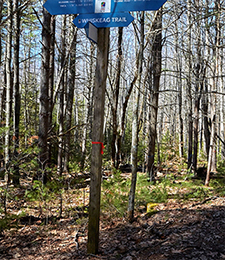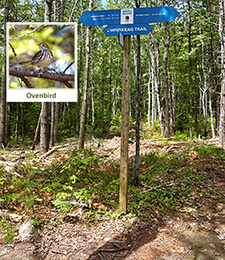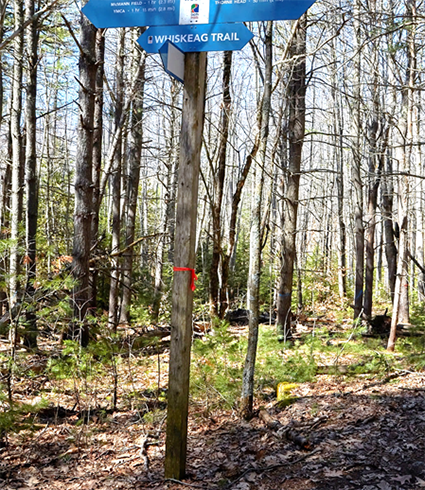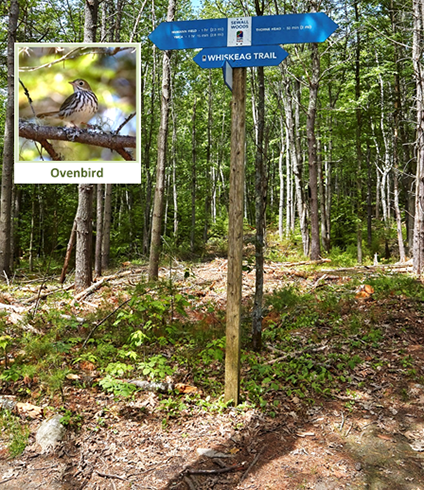DACF Home → Bureaus & Programs → Maine Forest Service → Projects → What will my woods look like? → Thinning II: Naturally established white pine pole stand
Thinning II
Site: Naturally established white pine pole stand

Woodland Owners’ View
Too many trees in this stand. The small pine seedlings aren’t getting enough light in order to grow bigger and better. If some of those competing trees are removed, the remaining trees will grow wider and taller.
Logger’s View
Loggers invest in cut-to-length systems so they can handle small trees like these economically. It helps a lot that the hiking trails are well-marked, so the equipment trails can be planned around them.
Forester’s View
The stand is overstocked, slowing growth of white pine sawlog crop trees; the stand stock table is well above the B-line. Barely established pine seedlings are suppressed, need to be released.

Woodland Owners’ View
This thinning will allow more sun and space for the top of the trees. The pine seedlings will show up in a few years. And, it looks like the ground and soil are intact.
Forester’s View
The light thinning from below provides more crown space for crop trees. It’s likely that some seedlings will be released, even though that’s not the primary reason for the harvest. Moderate amount of medium-sized woody material on the ground for habitat and soil protection.
Wildlife Outcome
Ovenbirds could be nesting in ground litter. Black-throated blue warblers and Blackburnian warblers also like these conditions.
Equipment Used
In-woods cut-to-length processor; six-wheeled forwarder.
Location:
Sewall Woods Preserve, Bath
Kennebec Estuary Land Trust
Carrie Kinne, Executive Director
207-442-8400; info@kennebecestuary.org
https://www.kennebecestuary.org/sewall-woods-bath

